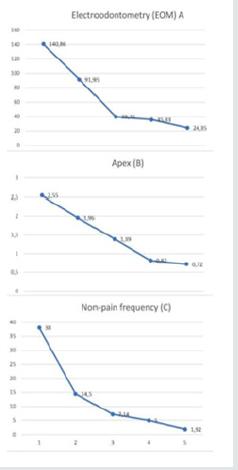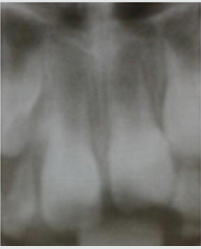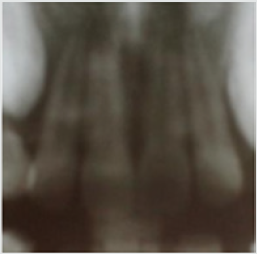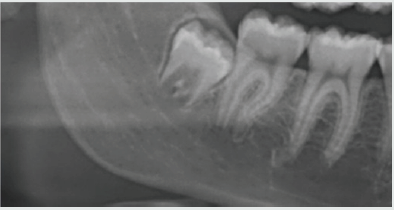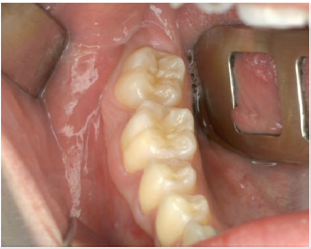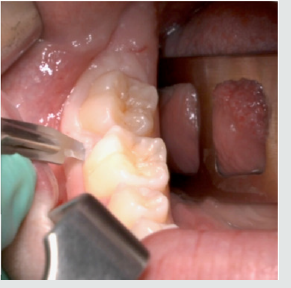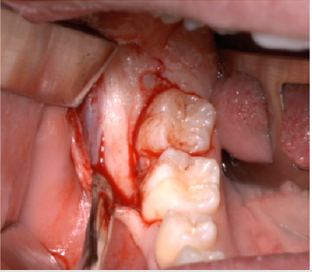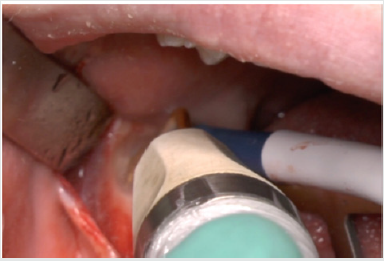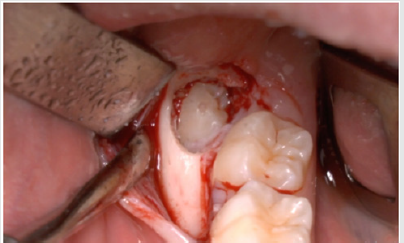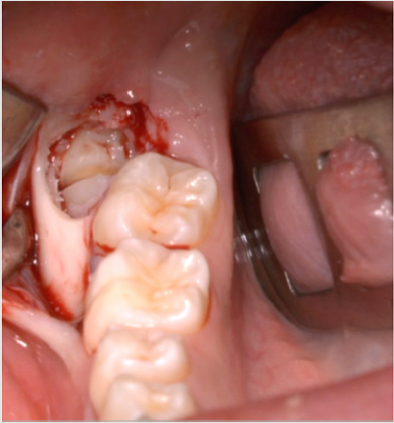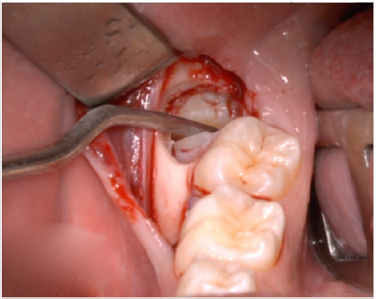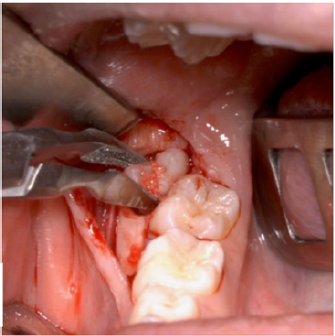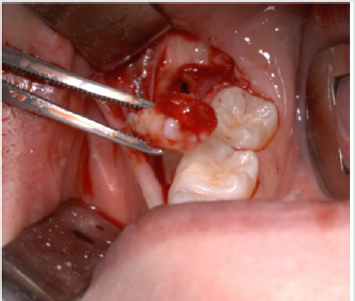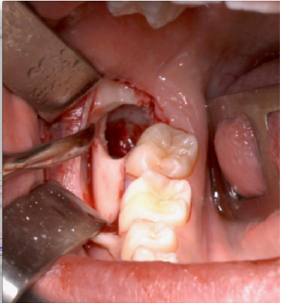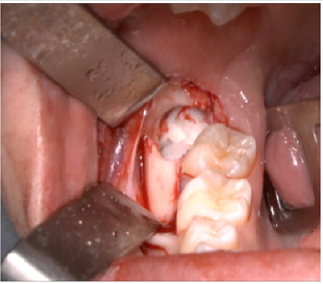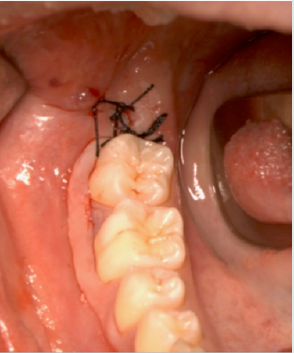The dental care of children is an area that requires special
attention. The dental visit, even in the early years of life, allows the
child to have, early on, greater contact and familiarity with the dental
environment, thus having the possibility to learn new habits
in addition to positive experiences with regard to oral health. Thus, it
is extremely important to know the view of children about the
dental care provided by the institution CEUPL-ULBRA. We randomly
selected children aged 3 to 11 years, 13 males and 8 females.
Data collection was performed through interviews and story-design after
the service, as well as analysis of the medical records to
record the procedures performed. For the analysis of the drawings and
for the interview, four categories were considered:
a) Dental environment
b) Dental treatment
c) Dentist image and
d) Behavioral manifestation
The most frequent categories in storytelling were the environment and
dental treatment, with the most cited curative
procedures. The operator / dentist’s image according to the drawing was
considered technical. According to the interview, the
clinical procedure itself was considered a positive point of care,
especially when it was associated with pain relief. The most negative
point was evidenced at times that led to some kind of discomfort in the
child such as anesthesia, taste of the prophylactic paste and
noise of high rotation. The perception of the operator’s image was
considered humanized in all responses. Most children showed
satisfaction with their smile and some reported the need to return to
the dental clinic for new procedures. Only a small portion
was free of oral problems. It is concluded that: the need for dental
follow-up is not consistent with the oral health condition of the
children evaluated and that the care process follows the curative model.
Keywords:Pediatric Dentistry;child psychology;health evaluation
Introduction
Pediatric dentistry is the dental specialty that takes care of
children’s oral health. It is known that the great fear presented by
adult patients in the dentist’s chair originates from the negative
experiences of dental treatments that occurred in childhood. For
this reason, the role of pediatric dentists is of great relevance in
dentistry. Pediatric dentists are responsible for the care of children
from infants to adolescence, and their exercise is comprehensive, as
it is not limited only to the prevention and solution of oral problems,
it also plays an important role with regard to the psychological and
educational aspects of the patient [1].The practice of children’s
dental clinic shows that children have some peculiarities, such
as growth and development, biodynamics, tissue and organic
responses, behavior, and personality structure. These peculiarities
cause the sociological methods and the techniques of physical
examination to have a different approach from that performed in
adults, despite having the same diagnostic and therapeutic purpose
[2]. According to Melo et al. [3], the dentist’s approach must be in
accordance with the child’s age and psychological development,
and can be used from a more playful language in early childhood to
logical explanations in early adolescence, so that in many situations
children are driven to overcome fears and phobias. During clinical
practice, it can be observed that lessinvasive procedures do not
generate major behavioral reactions, whereas more invasive
procedures are directly related to rejection and fear in the face of
treatment [3].The negative attitude towards dental treatment is a
process that begins in childhood, and the origin and cause must be
investigated by the Pediatric Dentist before any behavior control
technique is applied [4]. According to Gomes et al. [5], the child
may manifest fear and anxiety in several ways, the most frequent
symptoms being tachycardia, sweating, palpitations, tremor,
flushing and gastrointestinal complications.
Behind a behavior, positive or negative, there are a multitude
of characters that exert marked influences on children, such
as: age; the socioeconomic class of the parents; temperament;
psychological development; the environment in which you live.
Through such knowledge, the operator / pediatric dentist will
have more baggage for the application of certain measures, and for
a better understanding of the types of behavior presented by the
children[5]. According to the literature, several control techniques
can be used, such as: orders; compliments; reward; suggestions;
containment; distraction; restriction; dominance by voice and sayshow-
do. The pediatric dentist must, therefore, play an active role in
the psychological and educational sectors, allowing the avoidance
of possible trauma that almost always determines incompatible
relationships with the dentist or with the clinical environment
or even with the surgical procedures [6]. The control of fear and
anxiety during dental treatment must be performed throughout
the service. Thus, it is essential to use basic conducts to control the
situation, such as verbalization, associated with pharmacological
techniques for muscle relaxation or psychological conditioning,
reducing the wear of the professional in relation to the patient. The
proper use of these behavioral control techniques is fundamental
for the success of the planned treatment and consequent
restoration of the child’s oral health. The choice of behavioral
approach techniques may vary according to the professional’s
criteria, being influenced by factors observed during anamnesis,
such as age, child’s behavior, and parental acceptance. In this sense,
it is of great relevance to establish which procedures generate
more behavioral disorders through specific control protocols and
techniques for the care of pediatric patients, because regardless of
the procedure, it is clear that they present some type of discomfort
such as fear and / or anxiety, proving to be of great importance for
professionals to update themselves in offering treatment options
and techniques so that this moment becomes more dynamic
and comfortable, recognizing, first of all, each child with their
particularities.Therefore, knowing the child’s perception about
the dental experience is extremely important for understanding
the dental practice developed within the different environments
that offer this service. Such knowledge allows the dental surgeon
to identify possible failures committed and can develop new forms
of interaction during care, thus modifying negative behaviors and
/ or reinforcing positive ones. This will allow the use of more
effective methods so that they accept and understand the need for
the procedure[7].Based on this principle, this study evaluated the
perception of children between 3 and 11 years of age regarding
dental treatment, the figure of the dentist and their own oral health
condition, through analysis of information obtained by interview,
drawing on the topic and analysis of medical records.
Method
The present study is characterized in a cross-sectional analytical
and descriptive design, where the bibliographic research took place
through the consultation of online publications such as: LILACS,
SCIELO, BVS, PubMed. The search strategy occurred through Health
Sciences Descriptors (DECs) registered in Portuguese as: Pediatric
Dentistry, Child Psychology and Health Assessment, which are
terminologies that make up electronic articles and made possible
their search, in addition to the terms in English: Pediatric Dentistry,
Psychology Child and Health Evaluation. 100 publications were
found on the proposed theme, including subjects related to fear,
anxiety and behavior management, with 33 articles selected, 3
master’s dissertations, 3 conclusion papers of a specialization
course and 2 doctoral theses. For inclusion criteria, articles in
Portuguese or English were selected, complete and published
from 2009 to 2019, in addition to national books that addressed
methods of controlling behavior in pediatric dentistry, considering
the reliability of the selected material. As exclusion criteria,
articles, monographs, and dissertations that do not fit the research
objectives, in addition to those that are not available in full.The
research was carried out at the Pediatric Dentistry’s School Clinic
of the Lutheran University Center of Palmas, during the second
semester of 2019.The object of the study was children assisted
by the children’s clinic (I and II) of the institution, and the data
were collected in the second semester of 2019. A random sample
of 21 children aged 3 to 11 years participated in the research. The
variables used in this study relate to those observed by the child, in
relation to the procedures and the dental environment, and were
adapted using a questionnaire already validated, and a drawingstory
about their care.
As inclusion criteria, children in need of care participated
in the research, whether for the first time or not at the school
clinic. Children with motor difficulties or mental disabilities were
excluded. Children who refused to do the drawing and answer the
questions even with the parent’s permission, were also excluded.
Children who failed to answer just one question were not excluded from the sample. Children who stopped making the drawing, but
answered the questions, were not excluded from the sample.
Based on previous studies and according to several authors [8-
13]the application of the instrument was carried out through a
questionnaire already validated, where the child’s perceptions
regarding the situation of care were recorded. All data were
collected in the clinic environment, each child was approached
individually. This collection was made after the service, with the
application of a questionnaire containing 8 questions of the type:
a) What is a dentist?
b) Are you happy with your teeth? why?
c) Do you think you need to take more care of your teeth?
why?
d) While you were with the dentist, how did he treat you?
e) How was your reaction during the consultation?
f) What did you like most about the consultation?
g) What did you like least?
h) Finally, how do you feel now?
After the questionnaire was completed, the child was invited to
carry out a drawing-story about his care (each child was provided
with crayons and a blank sheet to carry out the drawing.), And
afterwards, describe the meaning of the researcher to the researcher.
In addition to the interview, the researcher was responsible for
collecting data regarding the patient’s clinical history at the school
clinic. The answers and the description of the drawing were faithfully
transcribed and evaluated. Those responsible were informed of the
research, and those who wished toparticipate signed the free and
informed consent form. The level of invasion of the procedure to
which the children were subjected was also subject to classification
where they were divided into groups 1 and 2, being classified as
invasive procedures (extraction; endodontics; restorations, which
require absolute isolation) and not invasive (prophylaxis; topical
application of fluoride and use of sealants that are carried out
without absolute isolation) respectively. Only those drawings that
met the following requirements were included in the study:
focus on the proposed theme
j) be completed
k) be clear for interpretation
l) in isolation or with the help of the child’s oral description.
Result and Discussion
A fluctuating reading was carried out for the initial knowledge
of the material produced. Subsequently, the drawings were systematically observed, and the texts obtained for each of them
were read, as well as their responses. Thus, the quantification allows
to define the shared thought collectively among the researched
group. Twenty-one children aged 3 to 11 years participated in the
study, with the frequency of each age as follows: 3 years (1), 4 years
(3), 5 years (1), 6 years(1), 7 years (3 ) and 8 years (5), 9 years
(4) 10 years (2) and 11 years (1). The male gender had the highest
frequency (13).
Analysis of the interview
It was found that the majority of respondents reported to more
than one subcategory during the interview. The perception of the
operator’s image was considered humanized in all reports and the
design of the treatment model was described by most children
as a curative, with preventive treatment being little mentioned.
In the positive view, objects from the dental environment were
highlighted, such as, for example, a dental chair, a Robinson
brush, and a dental sucker. In the negative view, the most frequent
responses were in relation to the dental procedure itselfwhen the
treatment generated pain or discomfort: “I did not like the needle”
and “I thought that noise was bad”. In the negative view, discomfort
related to other objects was also highlighted, such as a needle and
explorer probe.
Design analysis
It was identified that most of the interviewees reported to
more than one subcategory during the elaboration of the drawingstory.
The dental environment category was most frequently
addressed, being the subcategories, operator, and equipment.
The other categories demonstrated that, according to the child’s
view, the institution’s dental treatment presents itself as a curative
and technical model; but humanized, where the interviewees
reported having been treated with great empathy. The moment
of consultation in the days of the survey was reported by the
interviewees as a pleasant moment and the environment was
referred to as peaceful. The children’s behavior during the
observation made by the researcher was satisfactory (positive).
The operator was sometimes mentioned in phrases such as: “nice,
nice and polite” as well as “he treated me very well”, “she explained
what she was going to do”.The appreciation of the dental treatment
received by each one was evaluated by means of a positive view
(what he liked best) and a negative view (what he liked least). In the
positive view, the dental procedure was the most mentioned, when
related to the child’s pain relief, as identified in the excerpts: “I liked
it when she passed the ointment, and when she removed the tooth,
I didn’tfeel anything”; “I liked to pull the tooth out it because it
hurt.” In the negative view, the dental procedure was also the most
cited when it caused a sensation of pain or discomfort, as identified
in the excerpts: “When she put the needle it hurt” and “I didn’t like
that thing to brush my teeth”.
Analysis of the record
In the analysis of the medical record, despite the innumerable
invasive procedures, most of the subjects showed positive behaviors,
as the drawings and the speeches that showed tranquility, empathy
towards the dentist, establishing dialogue were expressive; it was
evident in the studied group that there is a relationship of trust
and good communication between professionals and patients.The
self-perception of the oral condition was evaluated as positive by
most children, and the most frequent reasons were demonstration
of health (8), absence of pain (6), self-care (4) as observed in the
report “I’m happy because they they are beautiful ”. For those who
negatively assessed their oral health condition, the presence of
pain related to the carious process was the main related reason
(5). Regarding the need for dental care, most children believe
that they should attend other dental appointments (12), for one
or more reasons, and the condition “To treat decayed tooth” was
mentioned (9) times and procedures related to prevention were
cited (3) times. Children who do not intend to return or only want
to return in case of pain.It was found that the child’s behavior in
the dental consultation can be determined by a series of factors,
such as maturity, relationship with parents, approach to the
dentist, past experiences, office environment, this because their
handling, in some circumstances, becomes a great challenge for the
professional. The professional’s positive interaction with the child
brings out the image of a humanized professional. In both cases, the
most apparent reaction in the child during and after the interview
was joyful and calm. Behaviors related to anxiety, fear and scared
were mentioned a few times (3), (1) and (2).In the present study,
children who claimed to be happy with their oral health condition,
even though they were compromised, demonstrate the inability to
recognize oral health as an integral part of systemic health, which
demonstrates a deficiency in health actions aimed at this evaluated
population.
To demonstrate the view that the child has on the care that
receives the drawing technique, it proves to be efficient because
it is a pleasant activity and easy to perform. This can be seen in
the course of this research. All children, after explaining the
research, readily accepted the invitation and expressed satisfaction
in drawing and reporting their drawings.The analysis of the
story-drawings about the dental care provided by the Clinic of
Pediatric Dentistry of CEULP-ULBRA showed very positive aspects
regarding the actions developed by academics and teachers. The
view of the infant patient that was part of this study reflects the
effectiveness of the work performed by the teams of the Pediatric
Dentistry Clinic of CEULP-ULBRA. The description of the drawings,
through the children’s speeches, denoted a scenario of tranquility
and empathy. It was very evident that there is a relationship of
trust, good communication between academics and children.
Communication between the dentist and the child, aimed at a friendly and friendly relationship during care, is essential for the
success of dental treatment and, therefore, for the establishment
of healthy behaviors. This condition was perceived in the storydesigns
carried out by the patients as being from a cordial setting,
with good communication and goodwill.Therefore, it is suggested
that further studies be carried out in order to identify the best way
of working with health professionals in order to encourage the
practice of prevention as a health promotion strategy in addition
to raising the awareness of children and their guardians. about the
importance of periodic dental consultations for the benefit of your
children’s health.
Conclusions
For most of the subjects participating in the research, the context
of the dental consultation is revealed to be a pleasant situation,
characterized by an educational-curative practice, and permeated
by a humanized view of the dental professional, configuring
itself in a pleasant situation. It was found that even in the midst
of invasive procedures, in the days of the research, the children
had behaviors of collaboration and demonstration of interest in
the care and tranquility during the consultation. It was found that
the evaluation process, through the technique of drawing-story, is
rich and authentic. Therefore, the technique can be considered an
excellent methodological alternative when compared to the use
of questionnaires, which can induce the respondents’ answers,
limiting the quality and depth of the evaluation process. According
to the interview and the medical record findings, the interviewees’
oral health is not consistent, requiring dental follow-up for both
new procedures and for hygiene and oral health care instructions.
Read
More Lupine
Publishers Pediatric Dentistry Journal Articles:
https://lupine-publishers-pediatric-dentistry.blogspot.com/



